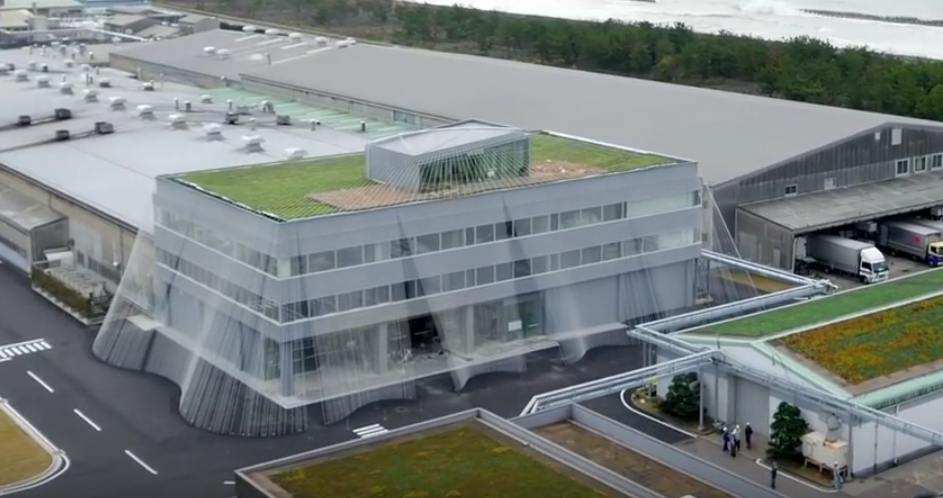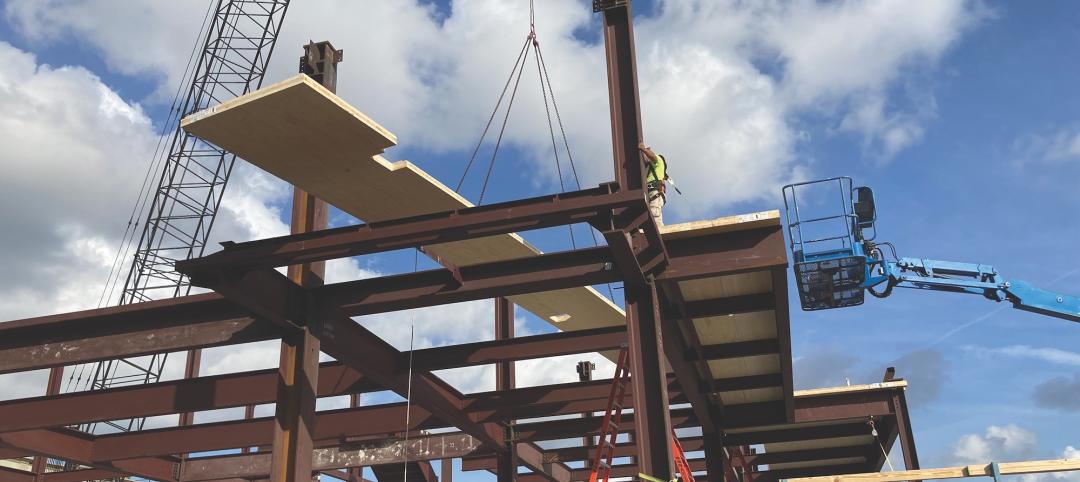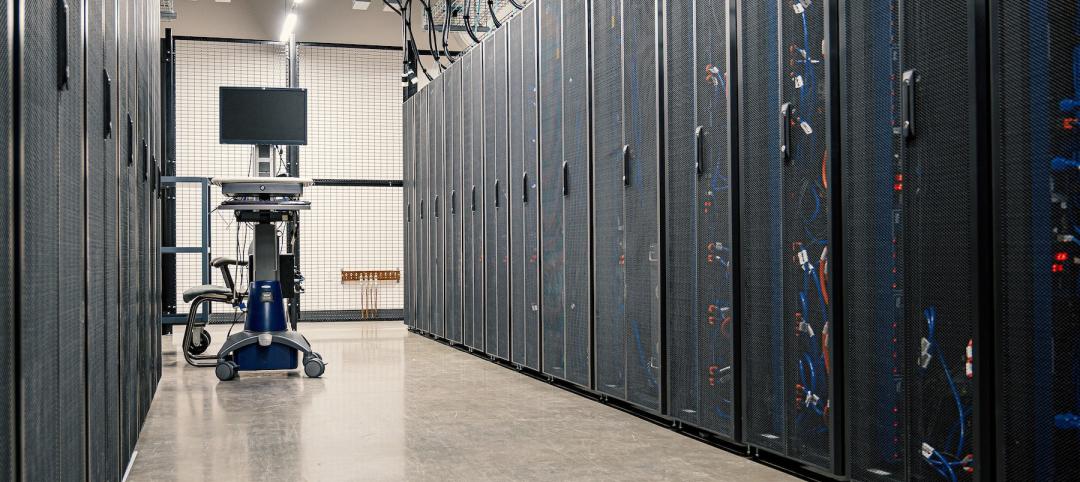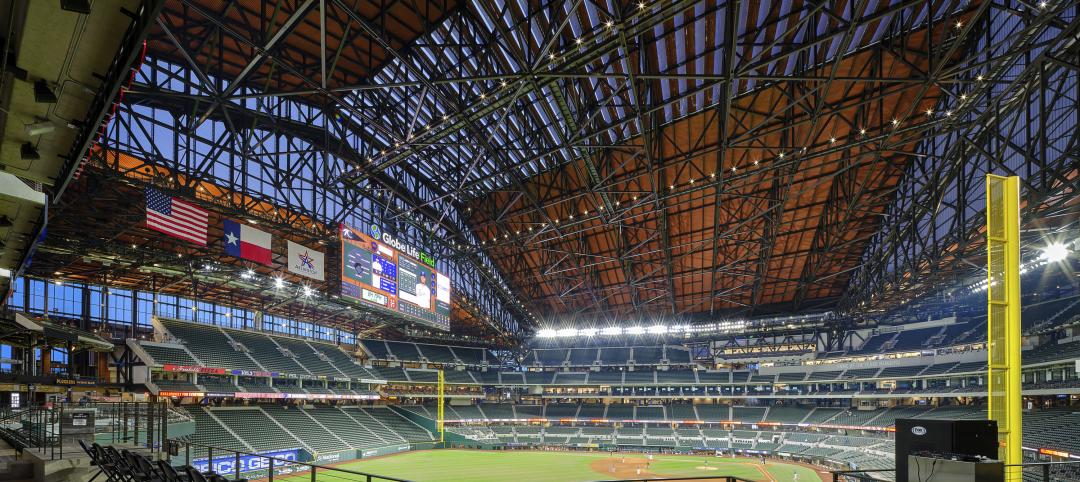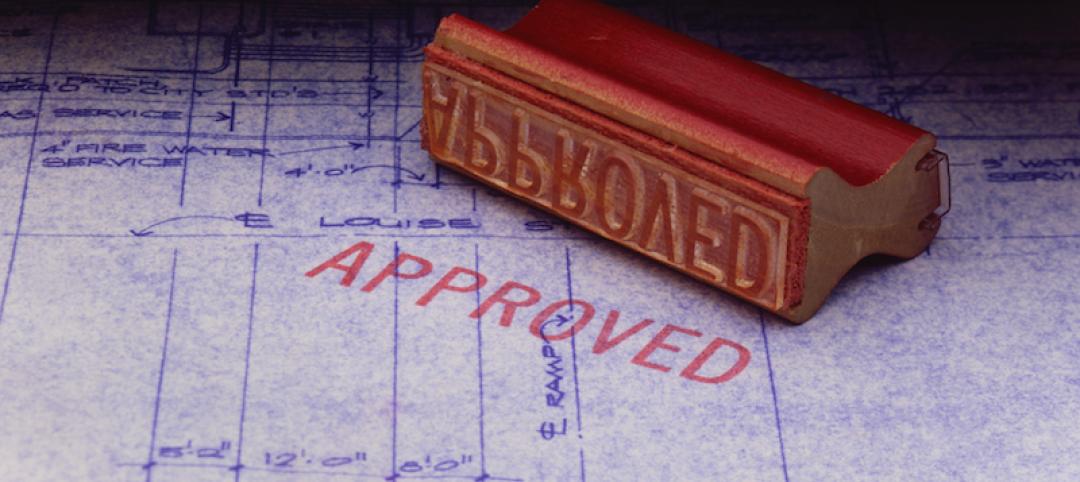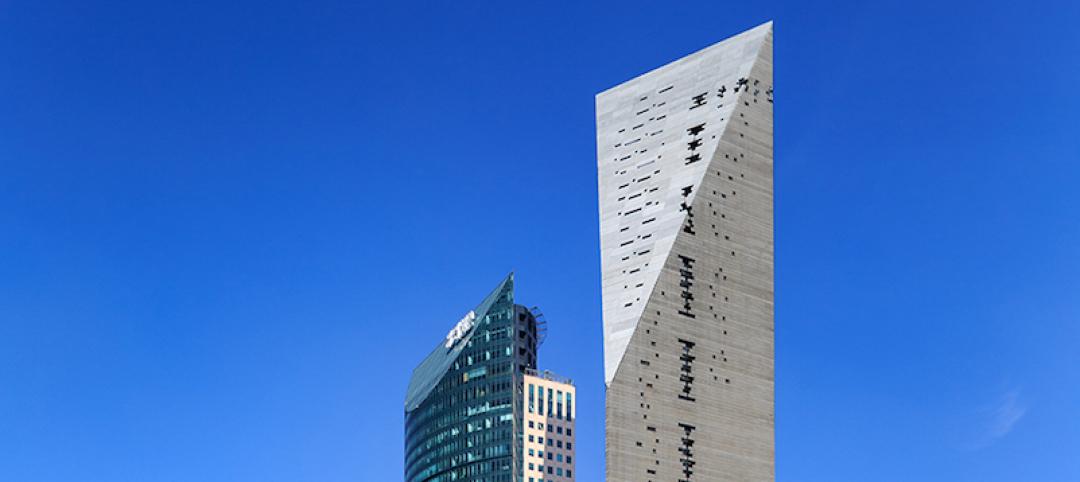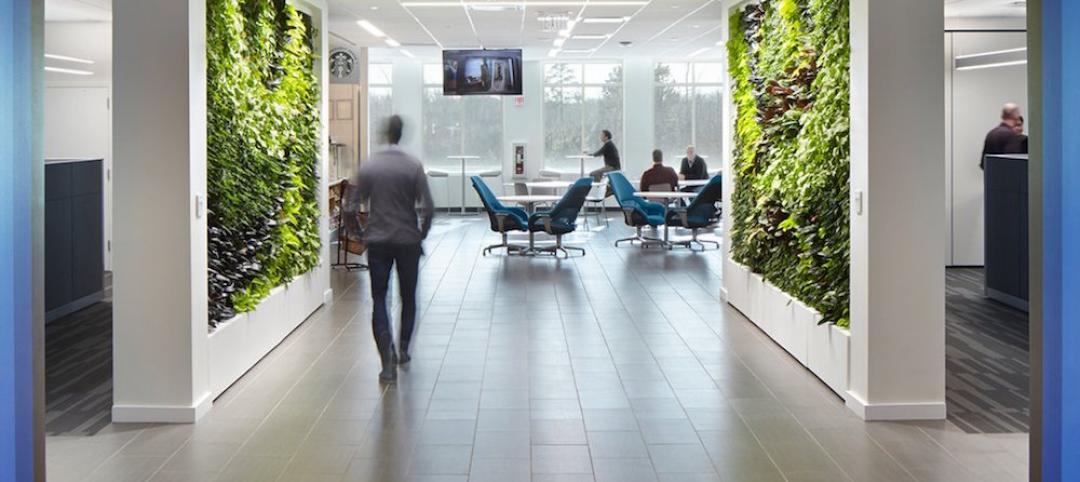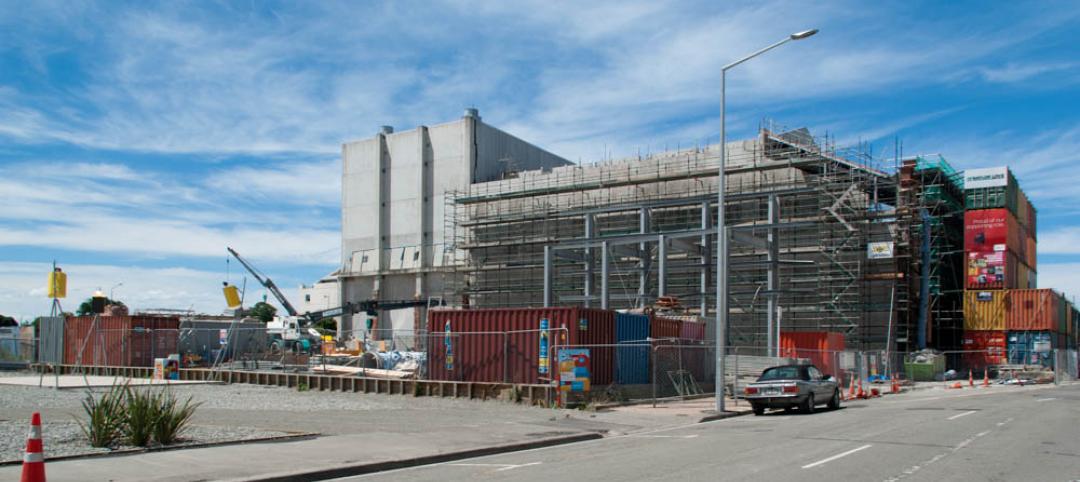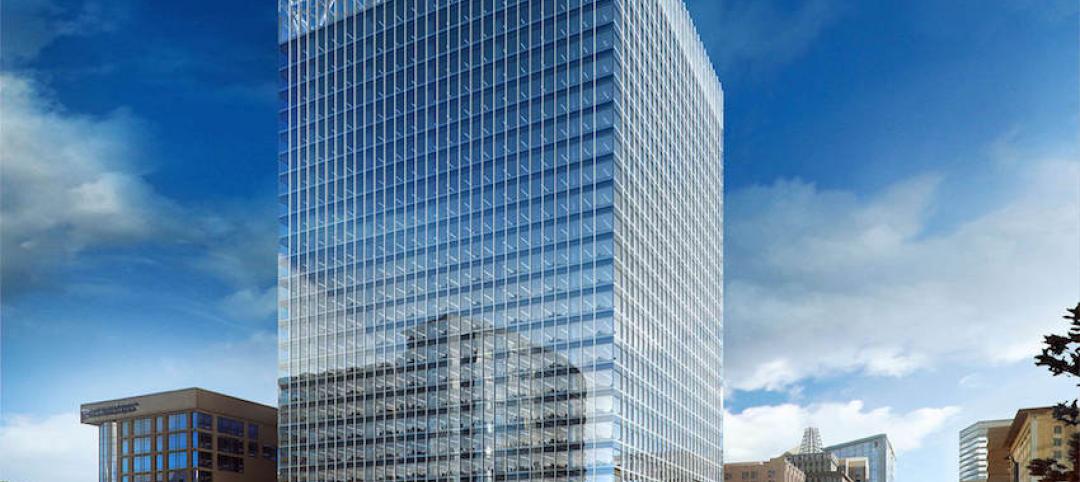Ishikawa, Japan, has experienced eight earthquakes over the past year. The constant rumblings have building owners seeking unconventional solutions.
Japanese architect Kengo Kuma found one for the former head office of fabric manufacturer Komatsu Seiren. The three-story building has been covered with Cabkoma Strand Rods, which are 9 mm-wide strings made of a thermoplastic carbon fiber composite.
As Endgadget explains, the rods make it appear that spiderwebs completely surround the building. The rods are tied to the roof and anchored to the ground, ensuring that when an earthquake hits, the entire structure will sway together and not crumble.
According to Kengo Kuma, the strings are seven times stronger than iron wires, but only a fraction of the weight. A 160-meter-long coil weighs just 26 lbs.
Related Stories
Sponsored | Steel Buildings | Nov 7, 2022
Steel structures offer faster path to climate benefits
Faster delivery of buildings isn’t always associated with sustainability benefits or long-term value, but things are changing. An instructive case is in the development of steel structures that not only allow speedier erection times, but also can reduce embodied carbon and create durable, highly resilient building approaches.
Data Centers | Oct 31, 2022
Data center construction facing record-breaking inflation, delays
Data center construction projects face record-breaking inflation amid delays to materials deliveries and competition for skilled labor, according to research from global professional services company Turner & Townsend.
Sponsored | BD+C University Course | Oct 15, 2021
7 game-changing trends in structural engineering
Here are seven key areas where innovation in structural engineering is driving evolution.
Seismic Design | Mar 31, 2021
Vancouver’s building codes may underplay seismic hazard
Vancouver, Canada’s third largest metropolitan area, has the country’s highest seismic risk.
Sponsored | Building Team | Jun 20, 2017
Plan ahead when building in the west
Getting a project through plan review can be an unusually long process, anywhere from six months to two years.
Seismic Design | Jul 28, 2016
Risk of man-made earthquakes now factor in seismic hazard analysis
Significant risk increases seen in some areas of the U.S.
Concrete | Jul 20, 2016
Arup ensures Mexico City concrete skyscraper can withstand seismic activity
Double-V hangers and irregularly spaced gaps allow the structure to bend.
Seismic Design | Jul 5, 2016
How design mitigates environmental stressors
For employees, certain design strategies can lessen stress, improve health, and promote a greater sense of community connectivity, writes Perkins+Will project manager Jon Penndorf.
Seismic Design | Jun 28, 2016
ASTM International updates seismic risk standards
Expected to improve consistency of risk evaluation on commercial real estate transactions.
High-rise Construction | Mar 28, 2016
SOM’s Salt Lake City skyscraper uses innovative structural system to suspend itself over a neighboring building
The hat truss-supported office tower was topped off in January, rising 25 stories above the Salt Lake City streets.


